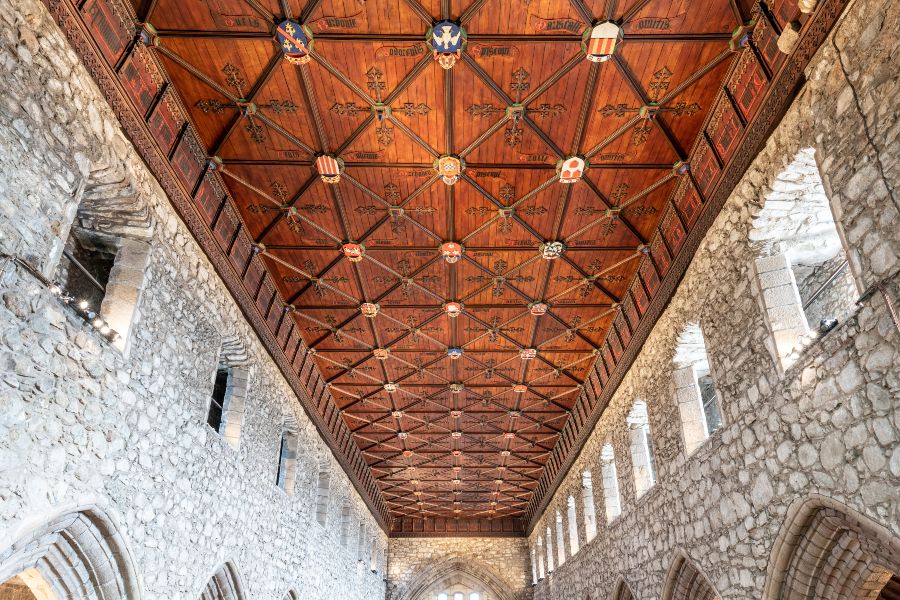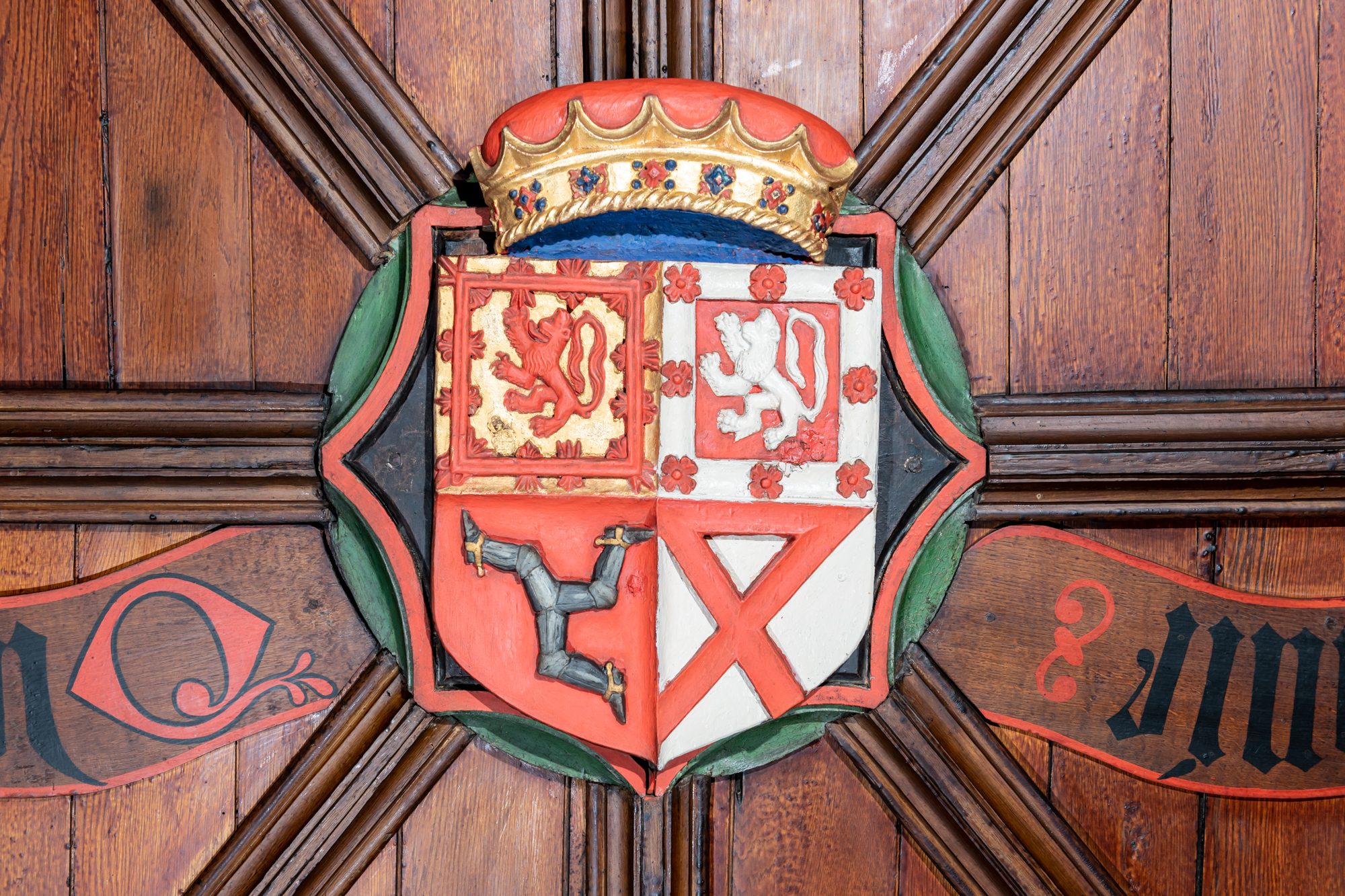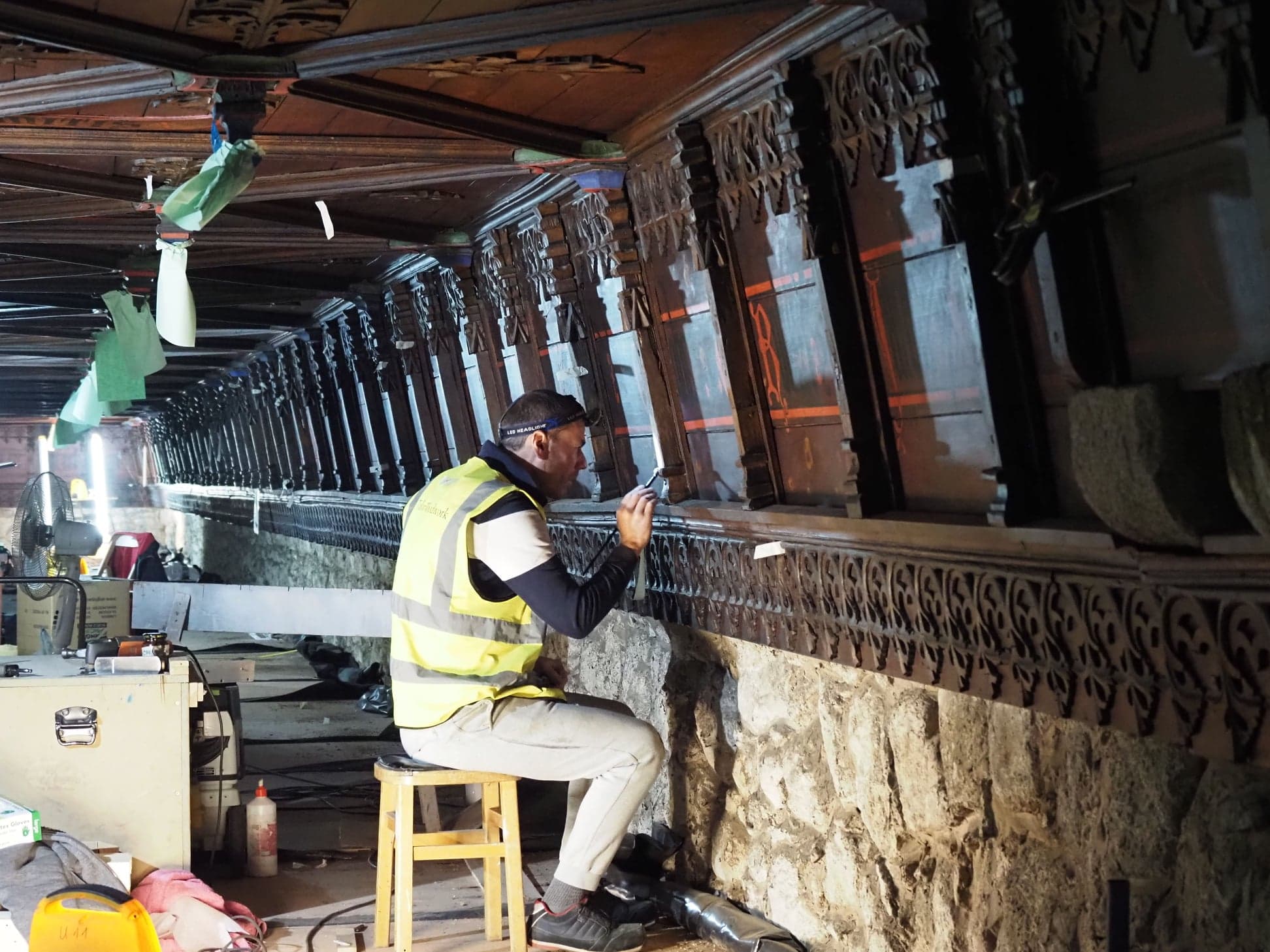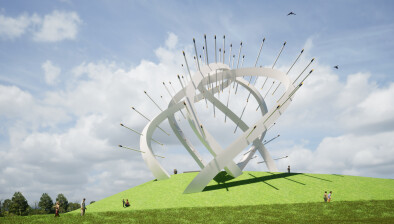And finally… faithfully restored

The 500-year-old heraldic ceiling has been restored thanks to a £2m preservation programme
The 16th century heraldic ceiling at St Machar’s Cathedral and the work carried out to restore it over the last two years are to be showcased as part of celebrations and thanksgiving in Aberdeen this weekend.
Comprising 48 coats of arms including that of Pope Leo X, King James V of Scotland, Henry VIII of England and many of the royal houses of Europe, the ceiling had survived the Reformation and half a millennium of history, but as it approached its 500th anniversary in 2020 it was demonstrating worrying signs of deterioration, including a mysterious white substance covering the shields.
The almost £2 million restoration project was part of a wider programme of repair and refurbishment which had already seen the replacement of the floor of the central nave and the installation of new pews.
“Without investment now, it would have led to a situation where it would have been very hard to maintain,” St Machar’s minister Rev Sarah Brown explained.
Since the ceiling was commissioned by Bishop Gavin Dunbar in 1520, St Machar’s, the oldest building in Aberdeen still in use, has seen many changes and is now part of the Church of Scotland’s Presbyterian tradition. For its current minister, the heraldic ceiling represents an important legacy.
“It represents how central the church was in both Scottish and European history and I suppose that legacy still lives on with the number of visitors who come from all over the world to see the church and particularly the ceiling,” she said.
“For me, that’s what it signifies, that sense of people 500 years ago investing in a faithfulness that is still being lived out.”

One of the 48 heraldic shields which have been a part of St Machar’s Cathedral since 1520
Providing an insight into the work to restore the ceiling is a Saturday evening lecture by Professor David Hewitt, who as client representative on the project worked closely with the contractors, Graeme W Cheyne Builders Ltd, and conservation architect Mark Hopton of LDN Architects of Edinburgh and Forres.
The work included installing insulation, a waterproof membrane and a new floor above the 16th century ceiling, as well as repairing the roof, which could lose up to 50 slates at a time in stormy weather.
“If the roof does leak again, it shouldn’t penetrate to the ceiling,” Professor Hewitt explained.
“Water will land on the floor and if there is a lot of it, it will go on to the plastic membrane underneath and be drained off to the outside of the church. Secondly, the temperature inside the church and above the ceiling should be roughly the same so the ceiling is not being subjected to extremes of temperature which was believed to be the cause of deterioration.”
To bring the building up to modern standards other remedial tasks were carried out and the stained glass windows were cleaned inside and out.
Expert restorers from Charles Taylor Woodwork and Scottish Wall Paintings Conservators repaired the woodwork and paint, and replaced the iron bolts securing the shields with stainless steel alternatives.
Finally, to help showcase the renovations at their best, new lighting was installed by Malcolm Innes Design.
“This means that, probably for the first time, the ceiling can be properly viewed in all temperatures,” Professor Hewitt said.
“We have never seen it like this because it was badly lit and covered with this dust, which turned out to be stearic acid, produced by the breakdown of linseed oil used to treat the ceiling. You could see it was an important monument, but it didn’t look glorious. It does now.”

An expert from Charles Taylor Woodwork helping restore the ceiling
Professor Hewitt also hopes the work will bring more attention to St Machar’s and its heraldic ceiling.
“Having a heraldic ceiling is extraordinary for a church. There are others over the course of the 16th century, but St Machar’s is the first and it is really one with a political message for Scotland and Western Europe,” he said.
“Here are 48 shields representing Europe, of which the Pope is at the centre, the kings of Europe down the north side and the King and regents of Scotland down the south side. It’s talking about a united Christendom under the Pope with ecclesiastical power supported on either side by secular power and all under God. It really ought to be better known,”
Remarkably, despite the disruption of Covid, the work was completed in just 12 months and within its allocated budget of £1.852m. As well as money from St Machar’s fabric fund, the work has been carried out with the support of the National Lottery Heritage Fund, Historic Environment Scotland, the National Churches Trust, the Garfield Weston Foundation, Aberdeen City Common Good Fund, the Allchurches Trust, the General Trustees of the Church of Scotland, the Baird Trust, the Aberdeen City Heritage Trust, the Friends of St Machar’s Cathedral, Scotland’s Churches Trust, the Barrack Charitable Trust, and many generous donations from individuals.
The Covid forced delay did mean that the Cathedral has had to postpone its anniversary celebration from 2020 to 2022, but Professor Hewitt sees no reason to be upset about that.
“We think that over 500 years, a slippage of two years doesn’t make much difference!” he said.
“After having been shut during Covid and the restrictions on visits during the restoration work, it’s been a long time of the doors not feeling like they could be opened, but they are open now and this weekend is definitely a celebration of that.”
















